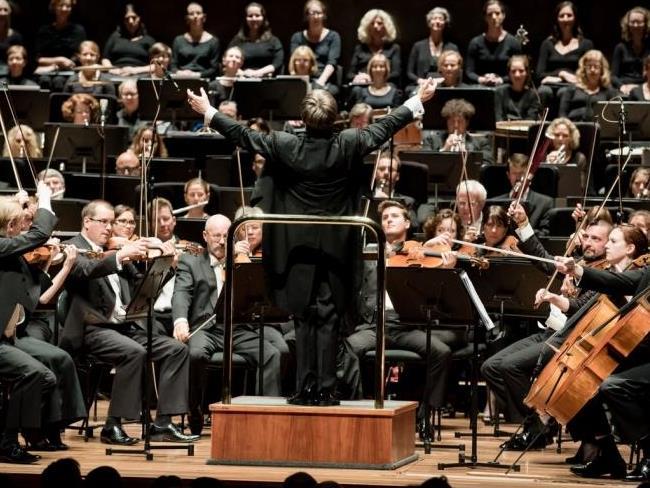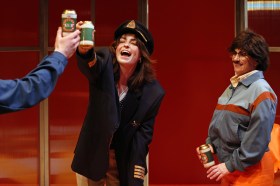Image: Sir Andrew Davis Conducts Mahler photograph courtesy of Melbourne Symphony Orchestra.
This program’s two works could not have been more unlike. The first was Mozart’s Piano Concerto No 21, a work of exquisite classical beauty and refinement, followed by Mahler’s 6th Symphony, a work that almost defies description for its frightening scale and force.
The soloist for the concerto was the distinguished American pianist Jonathan Biss. From the start a lightness of touch and elegance emanated from soloist and ensemble. Biss might even have been considering the sound world of the fortepiano, the instrument for which Mozart composed the work, with playing that was full of light and shade and brimming over with expressive, intelligent rhetoric in every bar. The spring-like frisson of the opening Allegro maestoso led to the sheer and dreamy Andante flowing smooth as silk, each descending scalic expression of the melody ‘sung’ with touching beauty and sincerity. The mischievous Allegro vivace assai was fully playful and joyous; both soloist and accompanying ensemble dance partners in perfect rapport. The performance displayed great style, flawless balance and blend, and particularly fine phrasing under Davis’s direction.
There is something unwieldy, even monstrous about Mahler’s 6th Symphony. Like its predecessor the work opens with a march, this time in A minor; grim marching indeed provides the idée fixe that occupies much of the work. All seems just as bleak as the former Symphony, however this march has a sense of determination, a march into or away from something with purpose and drive. Though Furtwängler described the work as a path towards nihilism, we soon find ourselves bridging the familiar razor’s edge of emotional polarities from this composer: implacable darkness and blazing light, romance and anger, ecstasy and despair.
Andrew Davis gave the first movement (Allegro energico) plenty of throttle. Beautifully voiced woodwinds preceded the glorious bloom of upper strings announcing the supposed ‘Alma-theme’ named after Mahler’s wife. The third component of the musical material comprises blissful Austrian pastoral music with the distant, tranquil jangle of cowbells. The argument builds with the scene changing to gigantic waves crashing into cadential breakers and ending in a blazing A major which, like the closing bars of Strauss’s Elektra, sounds alarming and unhinged in its ecstasy. The orchestra’s opening of the second movement (Andante moderato) by comparison was a tranquil sea after this tumultuous storm. A sense of fretful loneliness emanated from the excellent horn section with cushioned, superbly blended strings.
The third movement Scherzo has us back to the march, this time with a sense of the grotesque in brass growls, rude clarinets with raised bells, tapping battuto strings and xylophone. The half-hour final movement (Allegro moderato) has been described as a ‘hallucinogenic, emotional nightmare-scape’. Within seconds of its opening we felt the full measure of despair reached. The MSO’s reading of this sporadic material seemed to convey the hopeless last lunges of someone mortally wounded. There is more of the now otherworldly pastoral music with distant cowbells before, more or less, a raucous mania sets in. Two strikes of a large wooden box by a giant sledgehammer have been described as blows of fate upon the composer. However, on this occasion they sounded like a last outburst of desperation and fury. Any possible gleam of hope is extinguished in the symphony’s final withering bars.
A fine performance of Mahler’s 6th Symphony such as this is an unforgettable experience, draining of emotion and frightening in its conclusions. Although I recommend that it qualifies as a ‘must hear’, one surely could not bear to hear this music often.
Rating: 4 stars out of 5
Sir Andrew Davis Conducts Mahler 6
Mozart Piano Concerto No.21
Mahler Symphony No.6
Sir Andrew Davis, director
Jonathan Biss, piano
Melbourne Symphony Orchestra
Melbourne Arts Centre, Hamer Hall
30 June 2016






